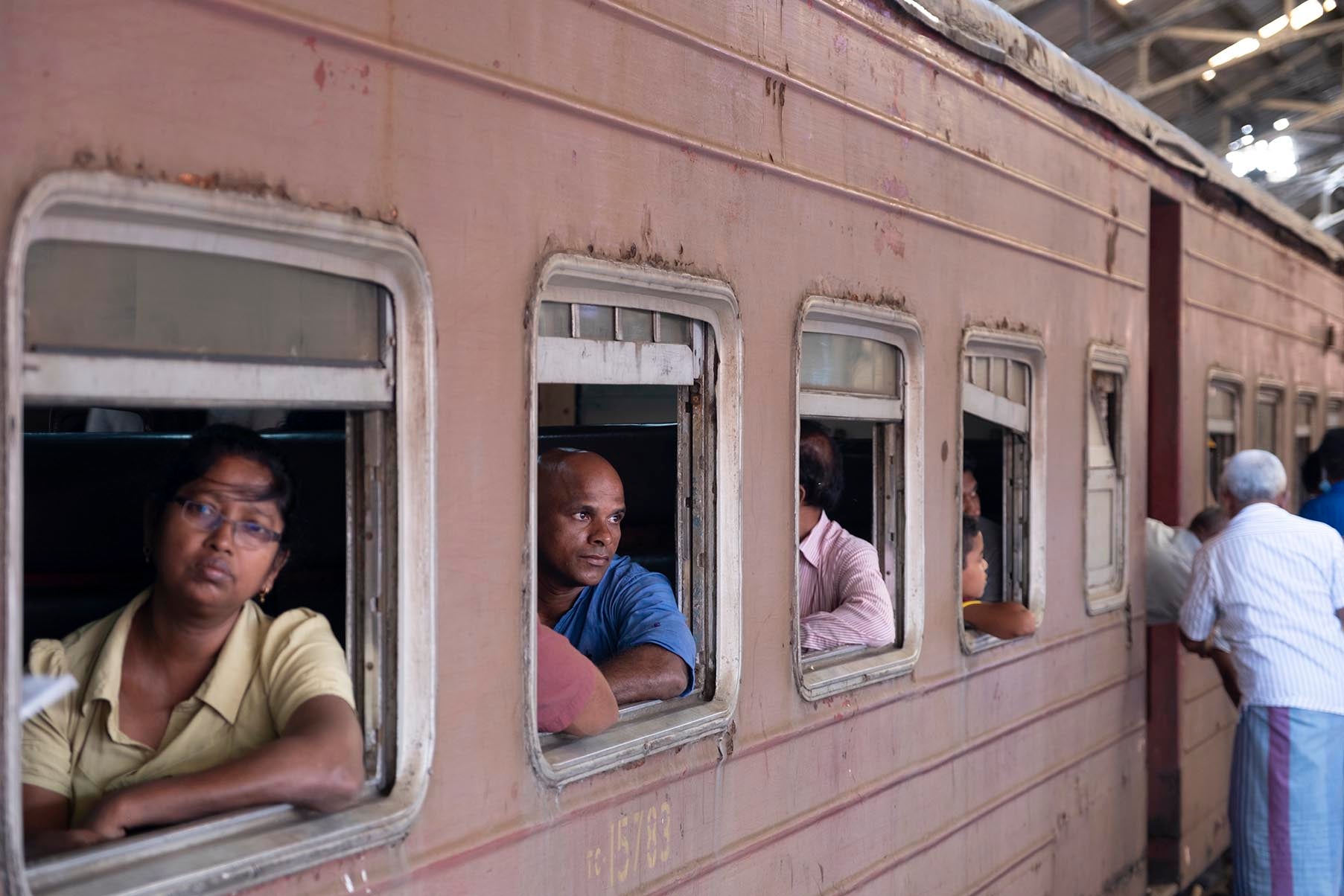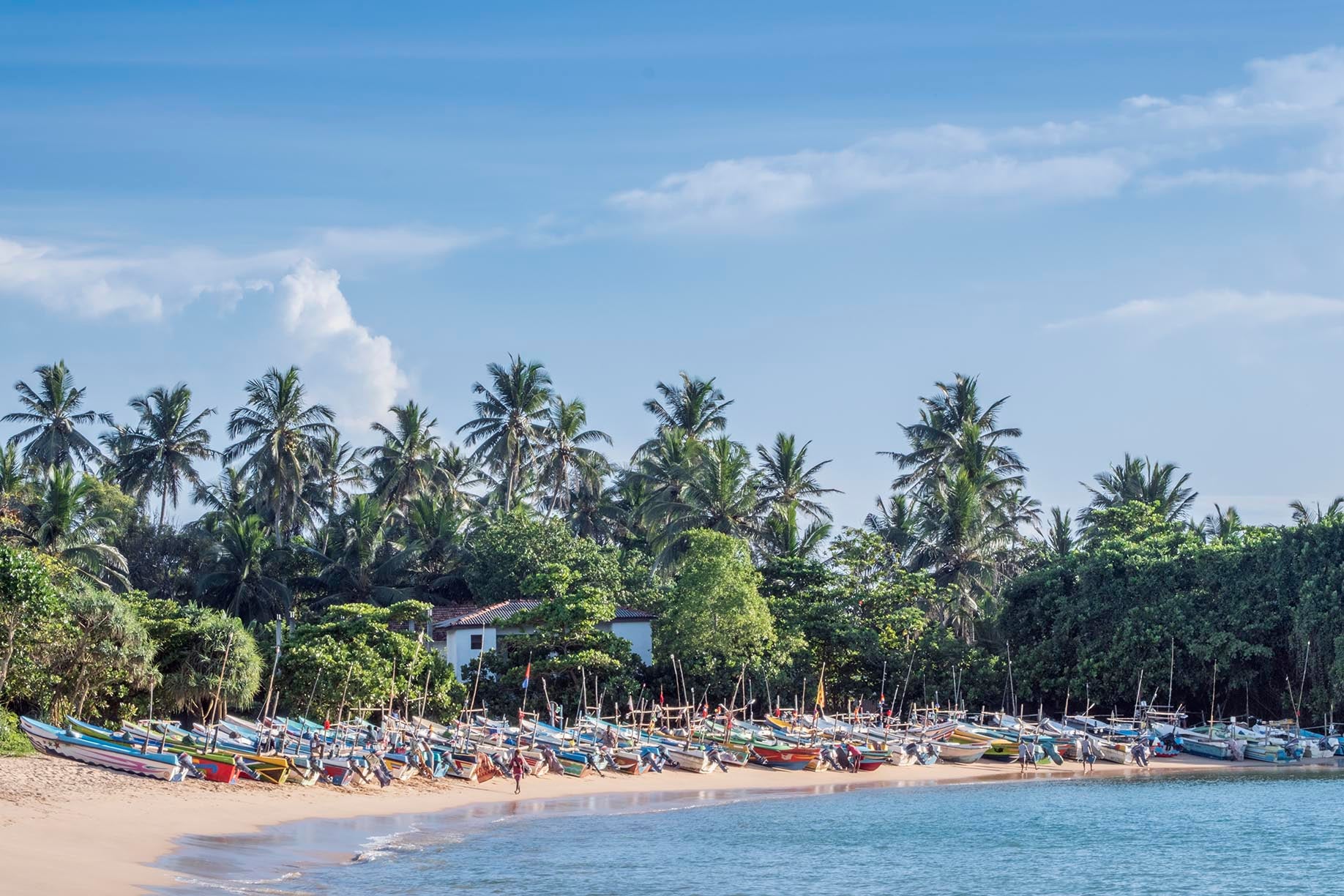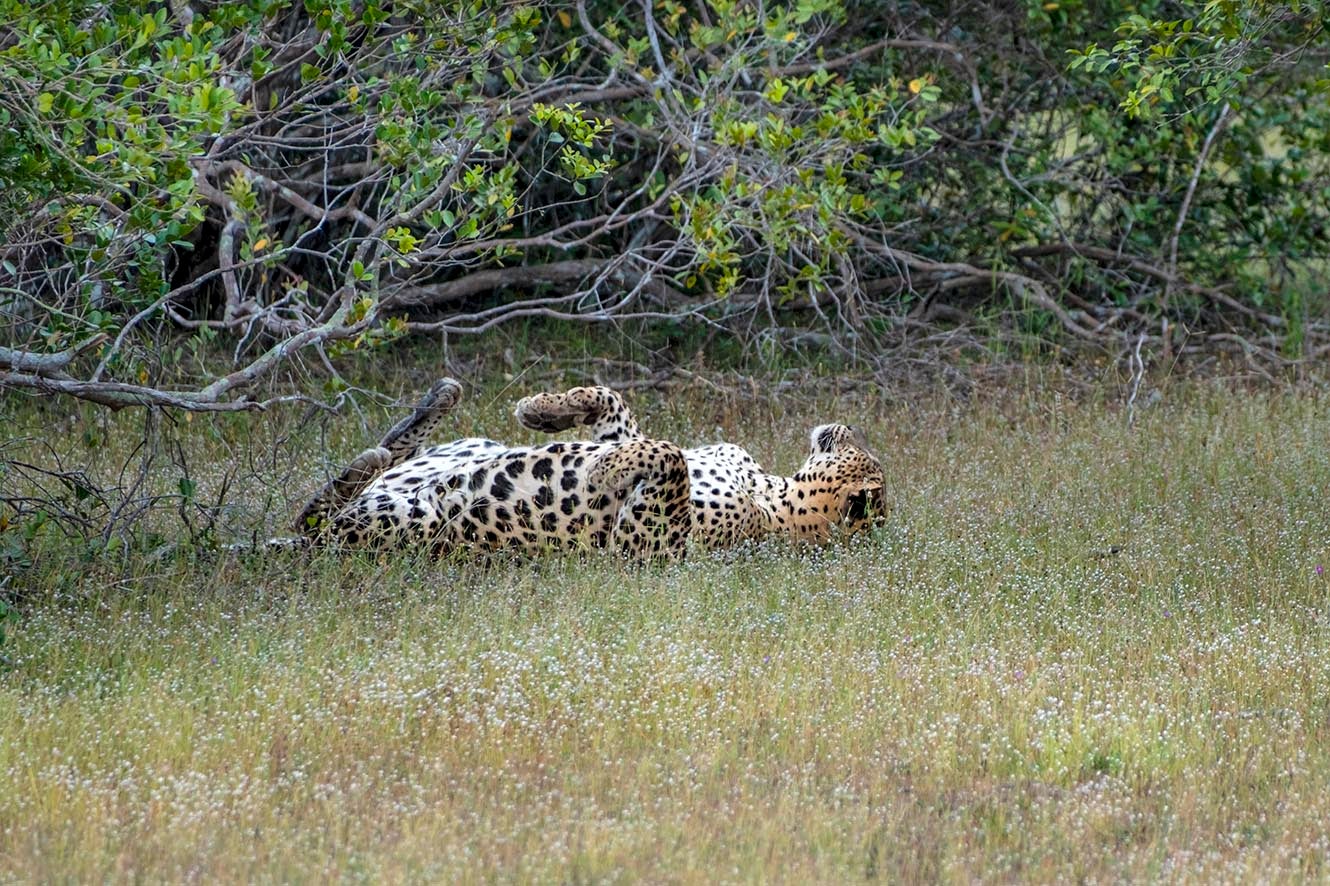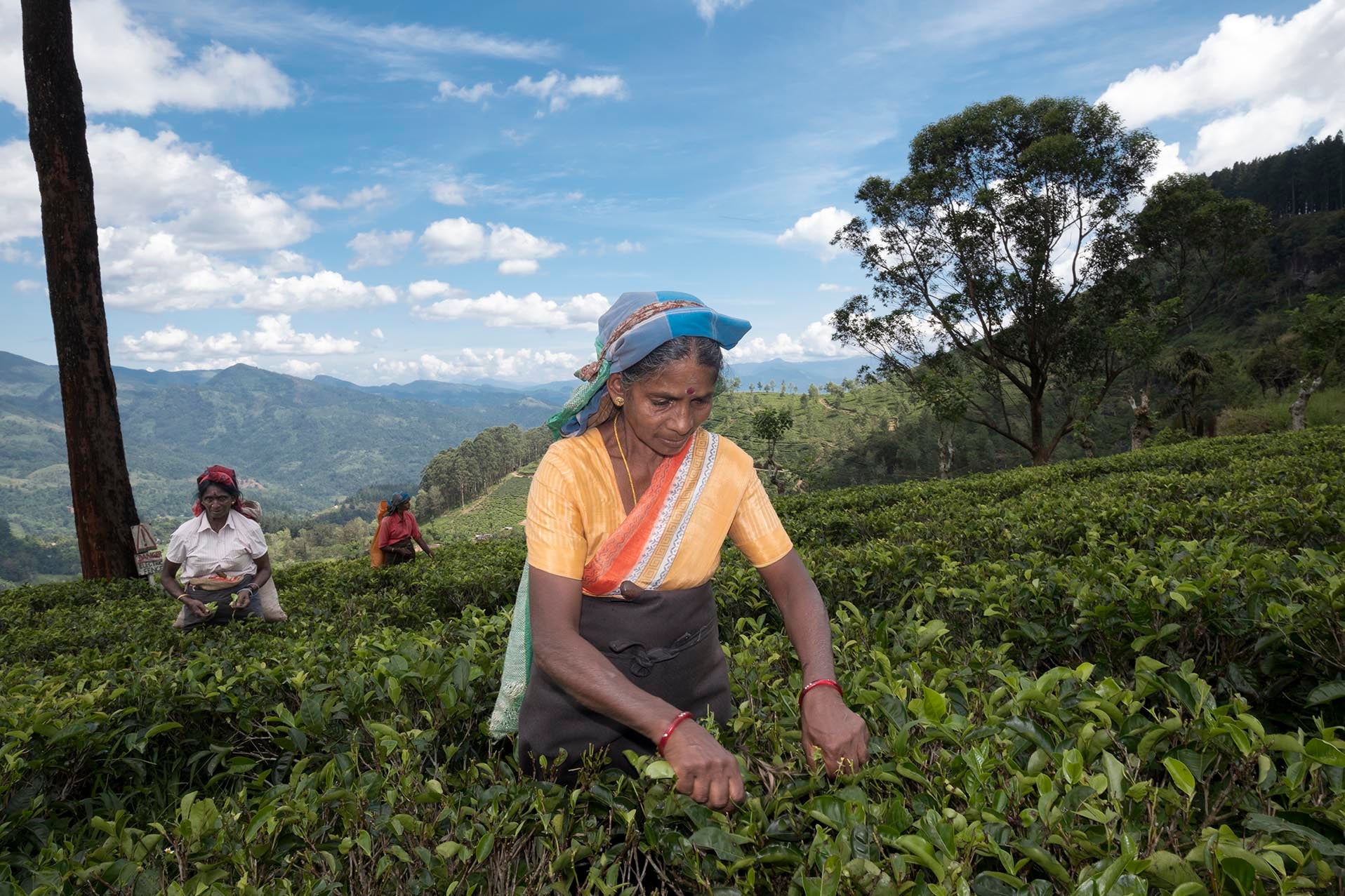Looking to see the real Sri Lanka? Explore by train
From Balapitiya beach resorts to the bustle of Colombo, this country is best traversed by rail, finds Alex Robinson


Trust a cat to trivialise your dreams. I’d longed to see a leopard for decades – picturing green eyes peering mysteriously through undergrowth, a flash of claw and maw, deer dragged up trees. And here he finally was – as fearsome as Bagpuss, legs in the air rolling and drooling on a flower-filled summer lawn like a big, spotted moggy basking in the warm sun. Contemptuously content and oblivious of my presence.
And I never imagined I’d see my first leopard in Sri Lanka; I thought it would be in the wilds of Namibia or Kruger National park. But Sri Lanka had defied my expectations since I’d arrived a week previously.
I’d imagined the country to be much like India: colourful, crowded chaos, spicy food, a scattering of temples and beaches busy with people who couldn’t quite afford the Maldives. How wrong I was. Sri Lanka was a revelation, teeming with wildlife unperturbed by humans, fringed with gorgeous beaches and dotted with lovely boutiquey hotels.

But it’s the people who are the real delight. It was thanks to a chance encounter on my first night in Colombo that my trip had been so wonderful. Fresh off the plane, with a beach hotel booked but no real plans, an Instagram post had brought me to Colombo’s newly opened Vertical Sky Bar, camera in hand and eager to catch the astonishing glass and steel bud and stem Lotus flower building in the post sunset light.
I was lost in the view of the skyscraper – glinting over bays and islands, churches and mosques, temples and stupas – when a group of locals who had gathered after work beckoned me to their table and drew me into a conversation. What did I think of Sri Lanka? What had I heard about it abroad? I mumbled something about beaches and buddhism, political upheaval and tsunamis. Saara, a young woman in a hijab, politely chuckled.
Read more on Sri Lanka travel:
“I think foreigners have a strange idea about our country,” she said, “I blame TV.”
“We are one of the oldest multicultural societies on the planet” added her friend Sewwandi, a Christian. “We’re descended from people from all over Asia, all over the world. And we’ve been living together for centuries.”

I told them I wanted to learn more. Where should I go? What should I see?
Saara gave me a list of national parks, the best beaches, the sights not to miss. Then her friend Dinithi, a Buddhist, offered a suggestion.
“Don’t just flop on the beach. Do Sri Lanka the local way: by train. Take the coastal railway line and then a ride into the uphill country. You can stop off at the best beaches, the national parks and the old cities along the way. And you will really see the country: valleys of tea plantations and wild jungle, flower vendors and farmers in village markets, women going to temple in peacock-blue Kandy sarees, fishermen in bright sarongs hauling in their catch…”
Don’t just flop on the beach. Do Sri Lanka the local way: by train
I did as she suggested and the very next morning caught my first train – from Colombo to the beach resort I’d booked in Balapitiya. From the moment we rat-a-tatted out of the old British-built girder-spanned Fort railway station I knew Dinithi had been right.
The train was all open windows and doors, immersing me in the sights and smells. I wasn’t cocooned in a car: here was a level crossing with a tooting impatience of rickshaws, bikes and cars, and their bowlers running towards the crease in cricket whites. We passed a stately Gothic church, a huge Buddha statue, a local fruit and veg market. As the shack and billboard suburbs of Colombo faded behind us, I smelled the salt spray sea and we clattered onto a stretch of line that hugged a yellow smile of beach.
After two hours the train clanked into the little station at Balapitiya and I was whisked efficiently to the Mosvold, a gorgeous bijou boutique that looked like an old Portuguese mansion. Jars of orchids and heliconias lent splashes of colour to the little polished stone lobby, waiters in crisp uniforms served icy cocktails under the palms by the pool and when I curled up with a paperback in the sun lounger, the only sounds were the call of Ceylon Magpies in the casuarinas and the swish of waves on the talc-soft sand. Endangered Olive Ridley turtles lay their eggs on the beach in front of the hotel in the velvet-dark nights. Blue Whales congregated offshore.
The next day I took a stroll in golden light and watched fishermen pull their blue and red wooden boats off the sand into the aquamarine Indian Ocean and found a hidden cove with gentle waves that were perfect for a swim.

Two nights in the Mosvold could easily have become a week of doing very little by the beach, but I remembered what my new friends had recommended: I had things to see, trains to catch. So on my third morning I doubled-back to Colombo and connected with the late morning train to Kandy – the last capital of Sri Lanka prior to European colonisation. As it left the coastal plains the train wound through lush jungle into the highlands, curving around sharp bends, the foliage of huge banana trees almost brushing against the carriages.
We plunged through dark tunnels, cut through hulking mountains in the early 19th century under the supervision of the Scottish governor of British Ceylon Phillip Anstruther. The route was built to connect the burgeoning tea plantations to the coastal ports: the vast plantation of Loolecondera – founded by James Taylor, a merchant from Auchenblae – and the Dambatenne Tea Factory, owned by a greengrocer’s son from the Gorbals called Tommy Lipton.
To this day Sri Lanka’s highlands region is littered with Scottish place names: Arthur’s Seat, Clydesdale, Kinross, the Aberdeen Falls… At the Argyle, an estate hotel is hidden under the brow of the giant rock-mountain of Adam’s Peak, you can stay in the tartan-filled Robert Bruce rooms and enjoy a Scotch in Nessie’s Bar. Haggis is even on the menu.
In Kandy I based myself at the Aarunya, a cluster of gorgeous villas set in a forest garden of gingers, orchids and cinnamon trees overlooking a steep tropical valley half an hour from the city. The sun rose right over the foot of my bed, mirrored in my huge plunge pool, melting the mist off the cloud forest and filling the air with soft warm light.
I spent my days soaking up the views, walking in the bird-filled forest and visiting Kandy. I wandered the bazaar-filled streets of the city, past the gold sellers and saree boutiques, the arty bookshops and student-filled coffee houses. I visited the magnificent Mahawàsala royal palace, which shimmers in white and gold in Kandy lake, and joined throngs of Buddhist devotees in the 16th century Temple of the Tooth. The galleries around the central stupa showcase an astonishing array of gold – a glittering, serene Buddha in the enlightenment mudra under canopy of gold dharma wheels – alongside the tooth relic itself, sat like a resting bell in a sea of devotee-offered flowers.

My final train journey took me from the highlands down to the steamy coast, where throngs of uniformed school kids squeezed into the carriage for their morning commute. Valley sides were stepped with deep green rice terraces; in one spot I saw monkeys playing in the trees next to the railway track.
After just over three hours we pulled into the pretty railway station at Anuradhapura, where a car from the Ibis Wilpattu was waiting. We sped past the bone -white stupas of the ancient Buddhist city to the hotel on the edge of the national park. From my tree house room I had the wilderness at my feet, spreading like a mini-Serengeti of lowland forest and plains to a distant horizon. There were wide-eyed lorises in the trees and eagles overhead; and the next day, in the forest itself, I would see that lazy leopard lounging in the late afternoon sun.
The sun rose right over the foot of my bed, mirrored in my huge plunge pool, melting the mist off the cloud forest and filling the air with soft warm light
I spent two nights in Wilpattu, and my final morning walking through the gentle surf at Tambapanni a few miles away – another idyllic stretch of golden beach. Legend claims that Sri Lanka itself was born here when Prince Vijaya arrived from the mainland in the 6th century BC. He was so enchanted with the beauty of the island that he kissed the sand and vowed to found his kingdom here – a pearl set at the foot of India. I understood him. This island I had overlooked for so long would be difficult to leave.
Travel essentials
The Earth Trip can organise sustainable bespoke holidays around Sri Lanka and offers a 16-day highlights and immersion trip from £3,270 per person, including all flights and rail journeys.
Staying there
Mosvold is a bijou boutique hotel in Balapitiya.
The Argyle is an estate hotel by Adam’s Peak in the Sri Lankan highlands.
Aarunya is a cluster of villas half an hour outside Kandy.
Ibis Wilpattu is a good-value option in Wilpattu.
Read more of our best winter sun hotel reviews






Join our commenting forum
Join thought-provoking conversations, follow other Independent readers and see their replies
Comments